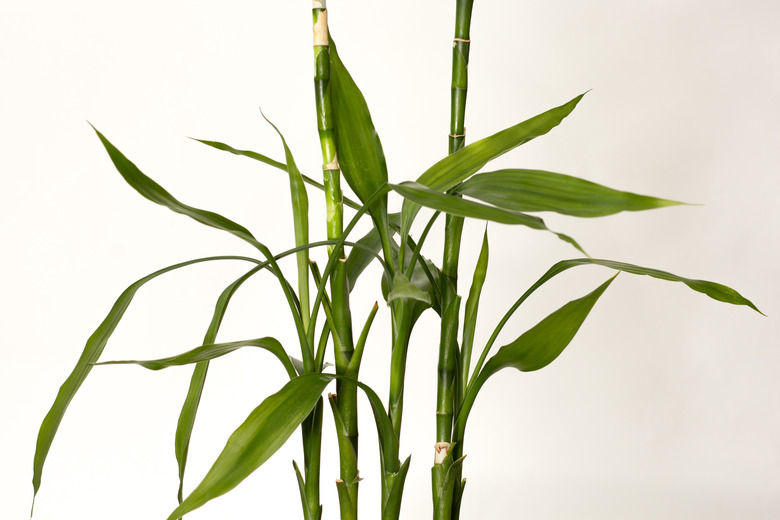How To Take Care Of Lucky Bamboo Plants In Water
Did you know you can grow lucky bamboo plants in water? Lucky bamboo (Dracaena sanderiana, USDA zones 10-11) isn't actually bamboo even though it might look like it. While true bamboo is a grass, lucky bamboo is actually in the asparagus plant family (Asparagaceae). Native to Africa, lucky bamboo is well-suited as a decorative houseplant everywhere and is often used as a feng shui principle to bring positive energy to your home. Taking care of lucky bamboo that's growing in water is relatively easy with adequate sunlight, warm temperatures and plenty of water.
Choosing a Container
Choosing a Container
Many lucky bamboo plants grown in water come in clear containers. This lets you easily check the water level and look at the roots to ensure they're healthy. Algae tends to grow more inside clear containers, which requires a little extra work to clean. The container should be large and deep enough to allow your lucky bamboo's roots to grow well and remain submerged in water.
Prepping the Container
Prepping the Container
Pebbles placed in the bottom of the lucky bamboo container add a decorative touch, but they also serve a purpose. The small rocks help keep the plant stems in place for stability. Position the lucky bamboo inside the container and pour enough water into it to completely cover the roots. You don't want the water to be too high; just keep the roots covered to keep the plant healthy.
Best Location for Bamboo Plants in Water
Best Location for Bamboo Plants in Water
Lucky bamboo plants like bright light, but they don't like to be in direct sunlight. Place it close to a window to get bright, indirect light for most of the day. If you notice the plant turning a pale-green color, it likely needs a little more light to stay healthy.
Choose a spot that stays warm most of the time. An ideal temperature range for lucky bamboo is between 65 and 90 degrees Fahrenheit. Watch for drafty windows, doors and heating and cooling vents that might cause sudden temperature changes.
If you have pets, place the lucky bamboo where they can't reach it. It's toxic to cats and dogs. It's not toxic to humans, so you don't need to keep the plant away from kids other than to protect the plant from damage and make sure tiny hands don't send a glass container crashing to the floor and breaking.
Maintaining Water Levels
Maintaining Water Levels
The best water to use for your lucky bamboo plant is distilled or filtered, especially if your tap water is highly chlorinated, or you have hard water with lots of minerals. When you use tap water, the salt and chemicals, especially chlorine and fluorine, can damage bamboo plants. You might notice the leaf tips burning brown from the chemicals. If you want to use tap water, let it sit overnight to help dissipate the chemicals before using it on your lucky bamboo but keep in mind that all the fluoride in the water won't dissipate and could still potentially harm the plant.
Check the water level every day to determine if enough has evaporated and lowered the level too much. Add more water as needed to keep the lucky bamboo roots completely submerged. Lucky bamboo plants don't need a lot of fertilizer, but you can use a liquid houseplant fertilizer about once a month if you want to encourage growth.
Cleaning the Container
Cleaning the Container
Adding water works to keep the roots submerged, but you'll also need to clean the container and change the water regularly. Do this every seven to 10 days to keep the water fresh and to prevent algae from growing. Dump out the old water, rinse the rocks and wipe the inside of the container. Change the water and clean the container sooner if you notice algae growing or if the water smells bad.
Changing Lucky Bamboo Plant Containers
Changing Lucky Bamboo Plant Containers
As your lucky bamboo plant grows, its roots eventually take up more space in the container. When this happens, move the lucky bamboo to a larger glass container that can accommodate additional growth. You can also trim back the roots enough for the lucky bamboo to stay in the same container.
